Before its declaration as a wildlife sanctuary, the forest was encroached upon by the Hmong people which turned the land into an agricultural area. After the successful removal of Hmong people along with strengthening of law enforcement, the forest was restored with some parts turned into evergreen forest or grassland which resulted in growing numbers of wildlife.
TYE consists of 3 management zones with 10 ranger stations which are distributed throughout the sanctuary. One ranger station building and facilities were supported by the Wildlife Conservation Society (WCS) Thailand program as this station is located at the main entrance spot for illegal poaching.
During 2007-2010, there were 5 patrol teams which have currently increased to 10 teams. As the threat intensity has increased, more numbers of patrol rangers and stations are important. At present, there are 92 patrol rangers.
Management zones of Thungyai Naresuan East Wildlife Sanctuary
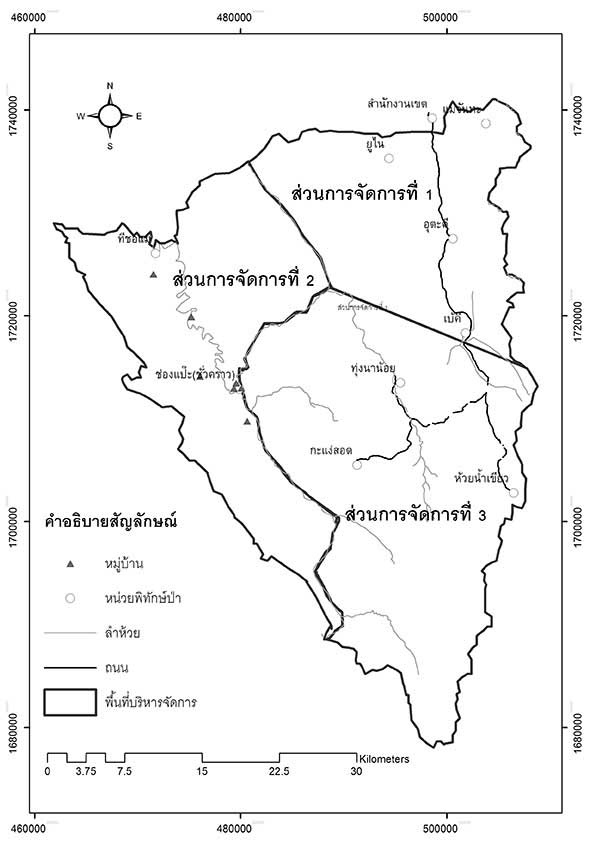
Wildlife within the sanctuary
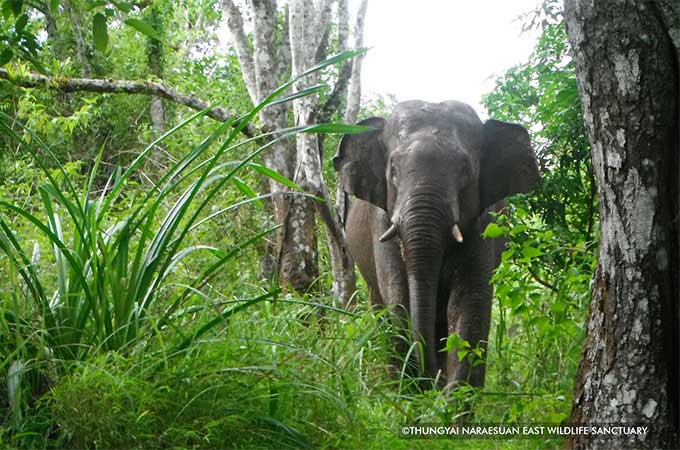 | 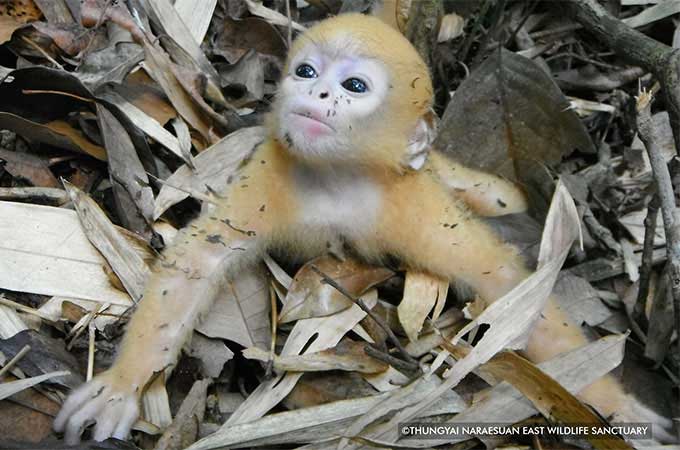 |
| Asian Elephant | Langur |
Law enforcement within the area
Overall Result
According to the patrol system, rangers have gained and improved their skills such as patrol techniques, discipline, weapon use, responsibility, technology equipment (e.g. GPS, digital camera, compass etc.). Consequently, all mentioned will creating effective patrol for better and up-to-date wildlife and area protection in time.
Over eight years, rangers have been intensively and continually patrolled in TYE. However, there are several serious cases from confrontation with poachers. Firstly, in 2011 rangers succeeded in capturing tiger poachers with the obvious evidences that link to tiger poaching in the sanctuary. Secondly, in 2013 the rangers planned to arrest tiger poachers. After encountering and fighting, they finally succeeded in arresting them. However, two rangers died in action. Lastly, in 2014 the rangers were attacked from villagers while they were transporting illegal logging from the scene.
Although rangers have been trained annually, however, all three situations show incomplete skills of confrontation, encounter and vigilance during their operations. As higher demands of wildlife products resulting in various types of threats, therefore, enhancing rangers skills and boosting their morale in order to work effectively and safely are important.
The training’s lessons are similar to training in Huai Kha Khaeng Wildlife Sanctuary and has been continually supported by WCS. Besides, construction and facilities for patrol operation such as meeting room, ranger station, vehicles, field gears and food supplies also supported by WCS.
The Smart Patrol Training under the “Law Enforcement Strengthening System”
The Smart Patrol Meeting Room
WCS has supported building and facilities for patrol operations
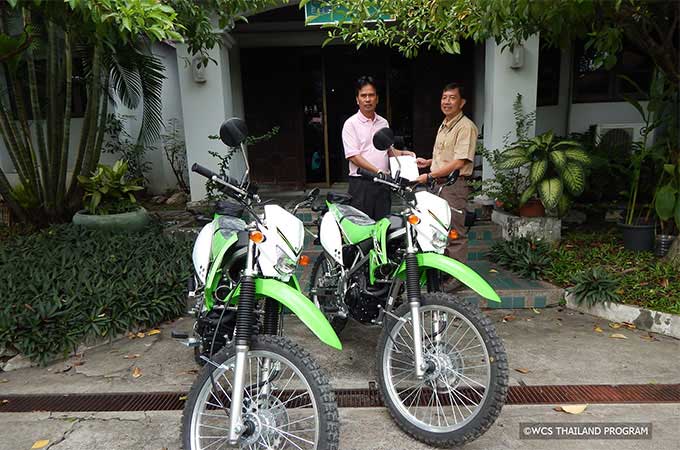
In 2008, TYE patrol coverage over an area of 1 km2 was done in 12 trips compared to the 2015 patrol coverage with a total of 41 trips. Overall, patrol coverage during 2006 to 2015 of most of the TYE area was patrolled thoroughly with 304 trips in total, including the expansion of patrolling in a nearby wildlife sanctuary border, e.g., Umphang Wildlife Sanctuary. Moreover, every month the rangers were required to submit patrol results they performed for further analysis with site management and a patrol plan in time for the next month.
The Comparison of Patrol Coverage in 2008, 2015 and during 2008 to 2015
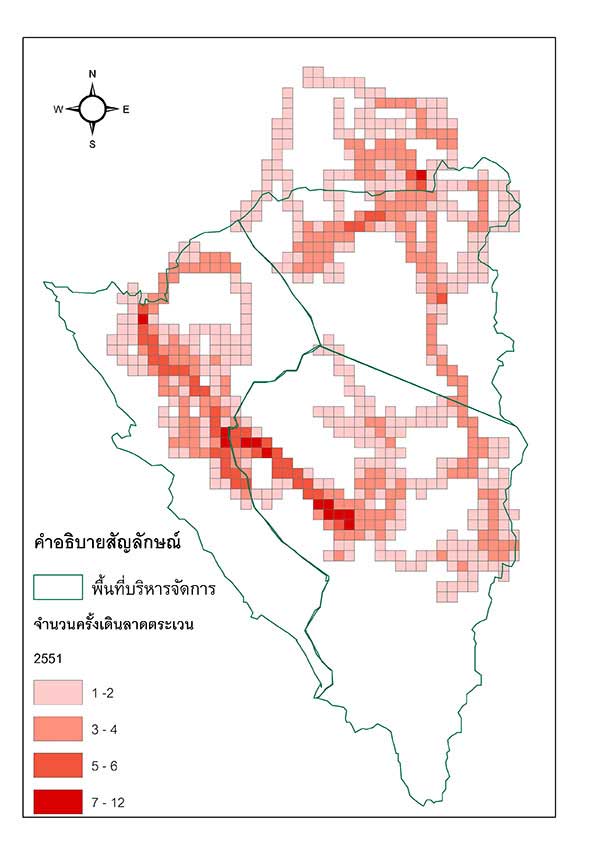 | 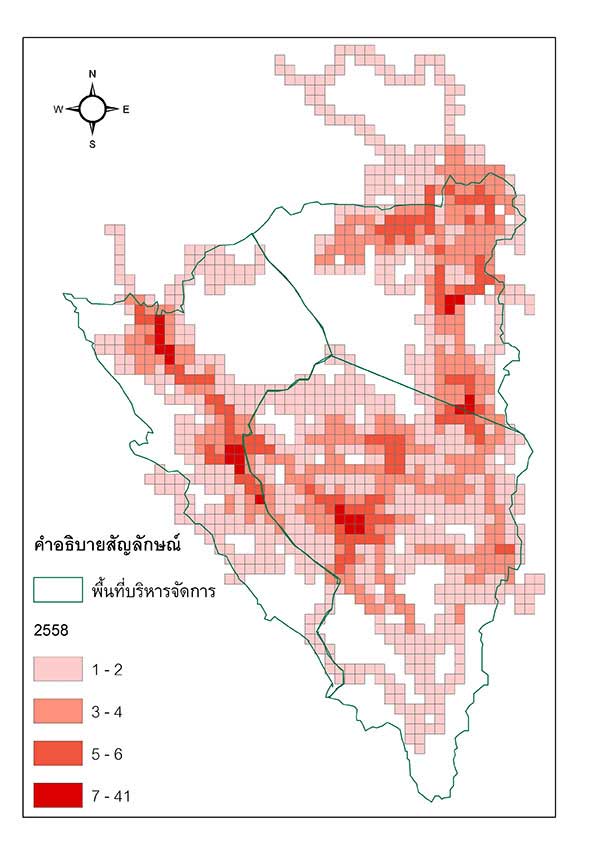 | 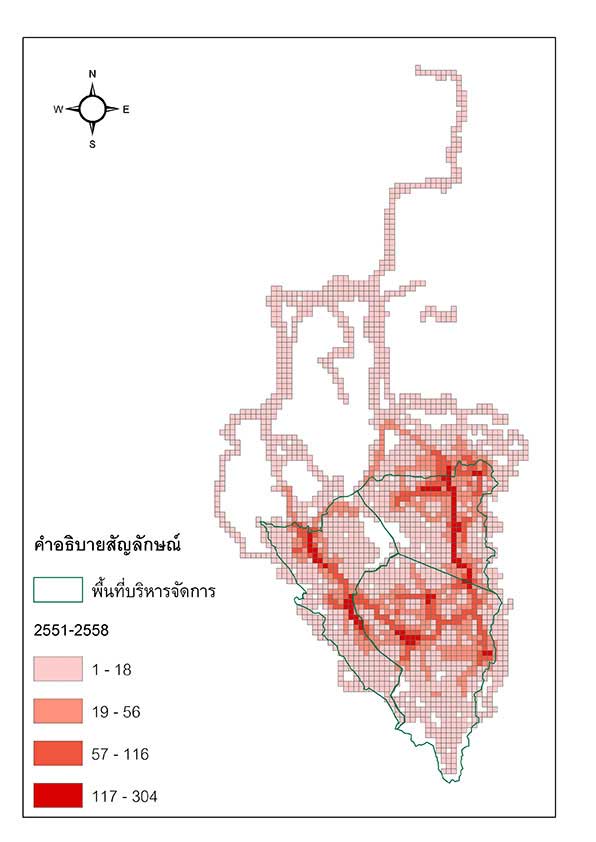 |
The comparison of patrol coverage
in 2008 | The comparison of patrol coverage
in 2015 | The comparison of patrol coverage
in during 2008 - 2015 |
Monthly Patrol Report form of TYE based on SMART Database
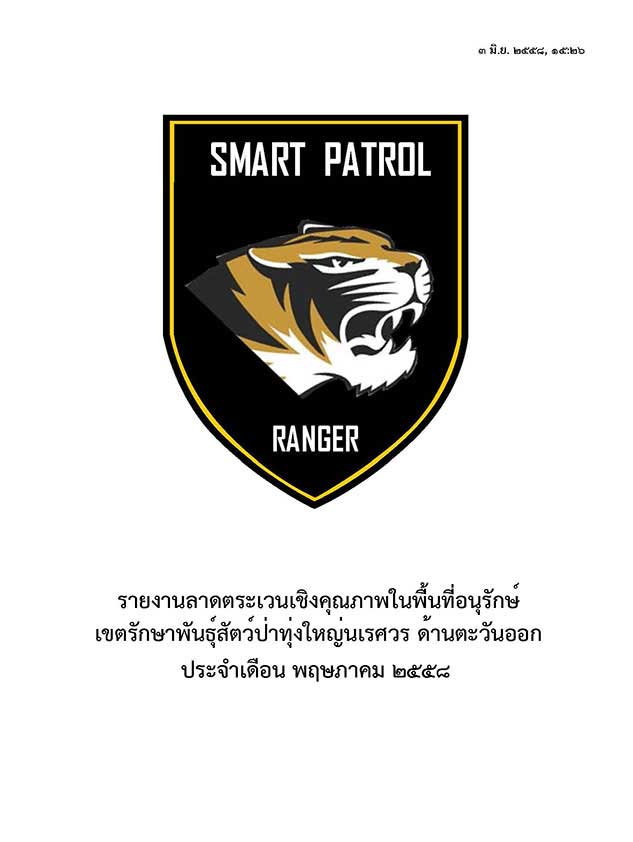 | 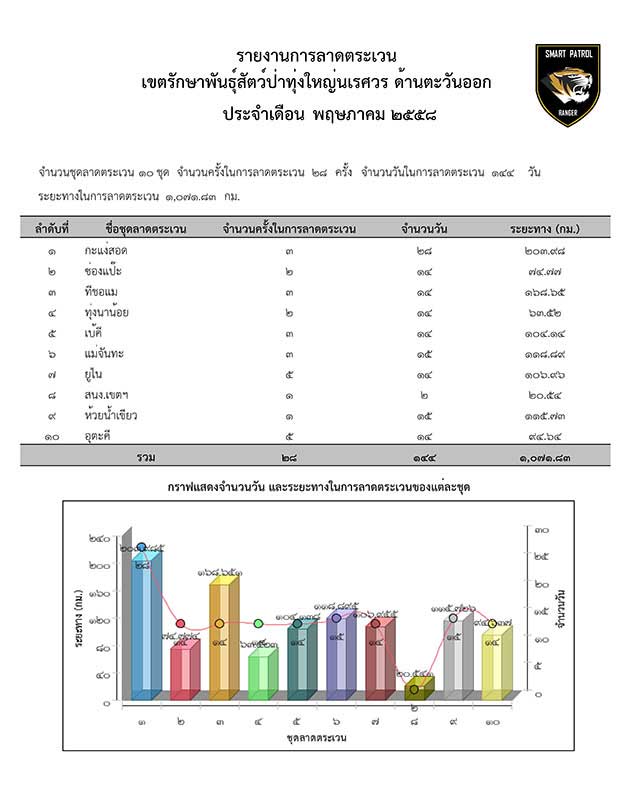 | 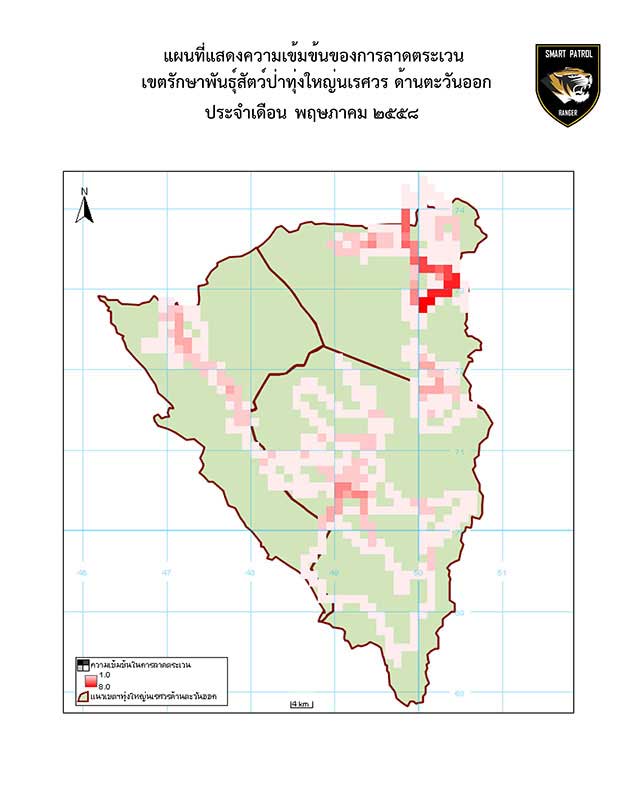 |
| Report cover | Result | Patrol coverage in particular month |
Due to the confrontation between TYE and HKK rangers with tiger poachers, superintendents, rangers and border patrol police, several meetings were held in order to find a performance standard for ranger safety and to tackle additional problems.
A Meeting between HKK, TYE and UMP Officers
Consultation with border patrol polices
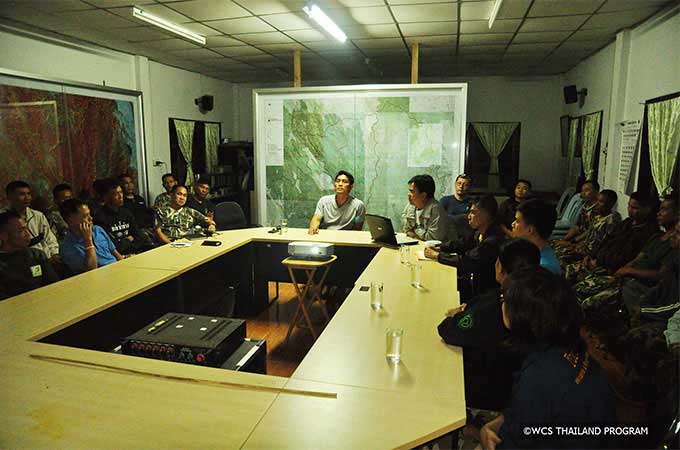
Next target
The Smart Patrol System in TYE still requires intense strengthening of both patrol techniques and equipment use in order to combat strong wildlife poaching inside the area. Each ranger was assigned to perform the mission intensely and spread over the area.
In regards to the patrol database development, it is important to manage the area in a timely manner from the patrol SMART database as officers will be able to use this database to support regular patrol and intelligence gathering, and further patrol plans. All of these will lead to successful threat control and management if the law is followed accordingly.